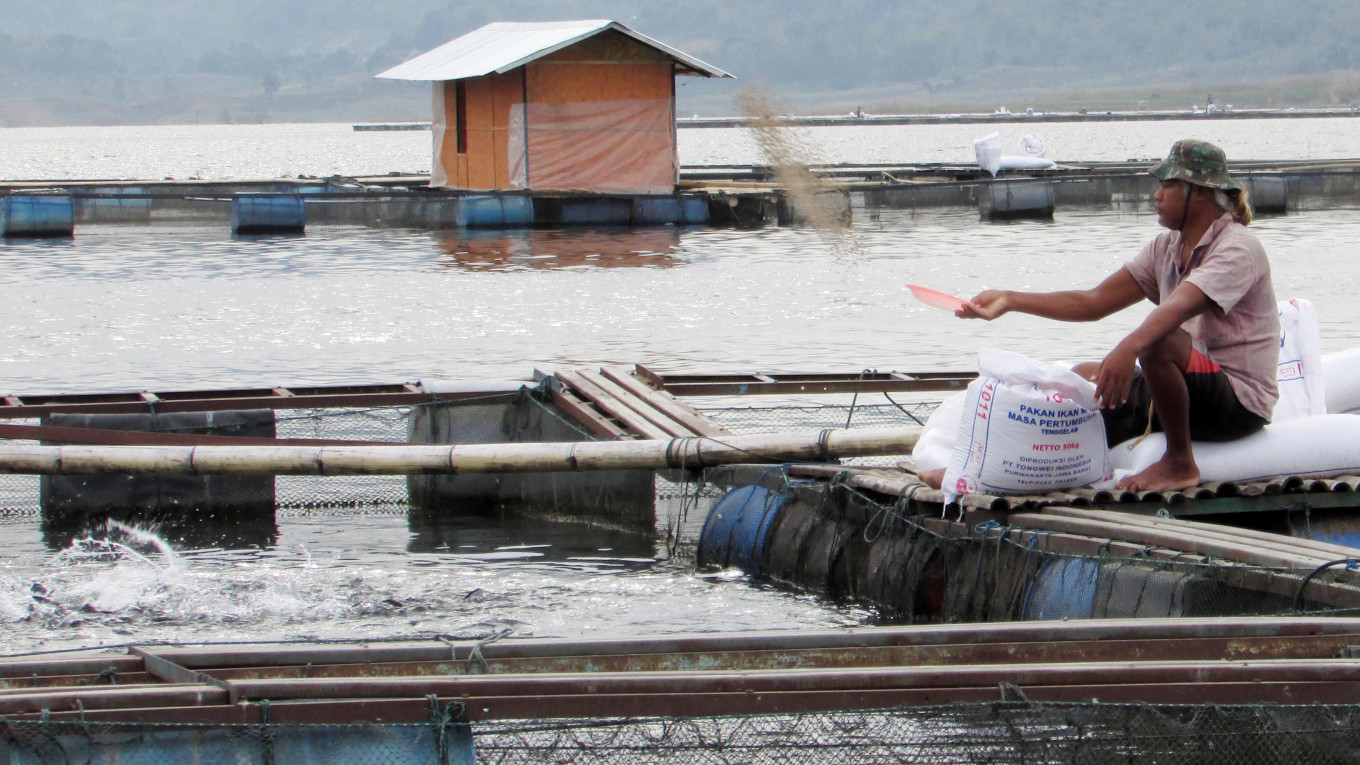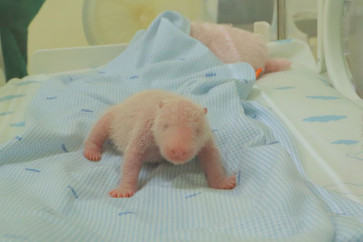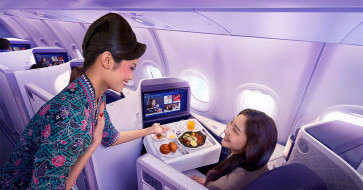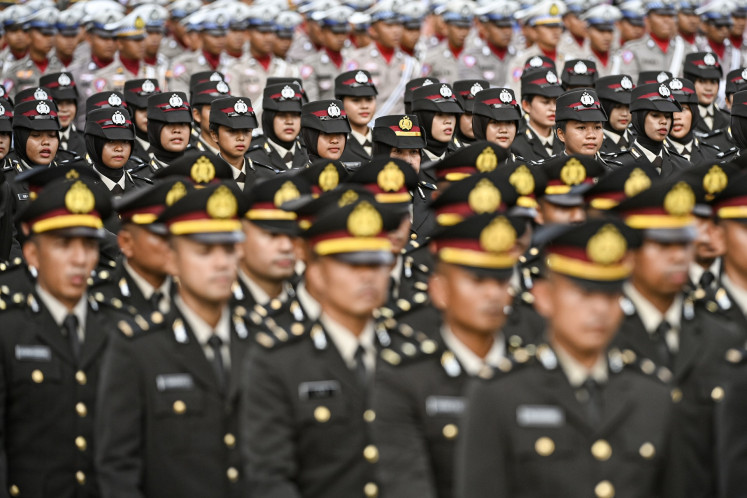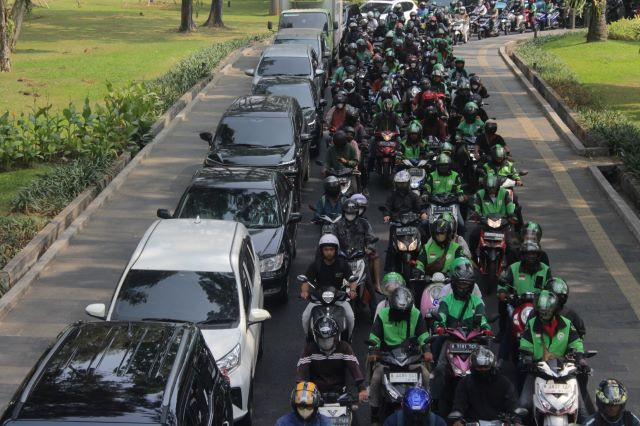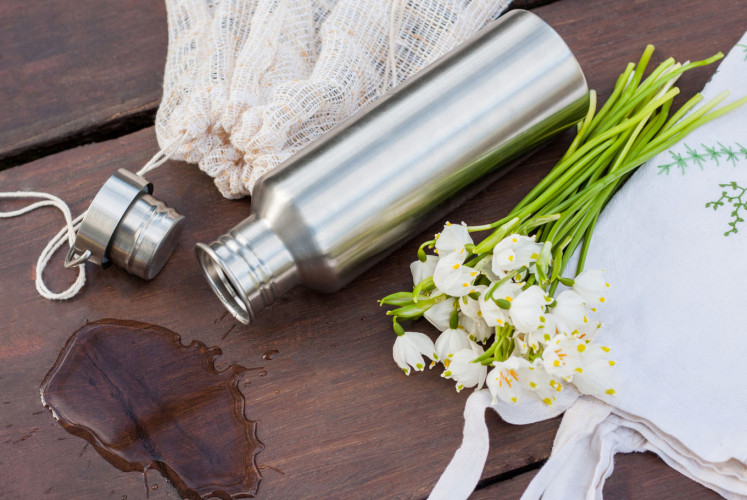Popular Reads
Top Results
Can't find what you're looking for?
View all search resultsPopular Reads
Top Results
Can't find what you're looking for?
View all search resultsHurdles remain before aquaculture becomes way forward
Change text size
Gift Premium Articles
to Anyone
W
endi, 25, said he could earn up to Rp 10 million (US$679) per month from farming one shrimp pond in his village at Serdang Bedagai, North Sumatra. He currently manages three ponds.
He said his current earnings were a stark contrast from his low earnings as a rice farmer five years ago. At the time, his friends taught him how to manage shrimp farms, which eventually led him to shrimp farming.
“Shrimp farming is decent because we can reap results every three months. I need to wait at least 7 months [to get results] from the rice harvest,” said Wendi, who plans to build a fourth pond soon.
Wendi is among other fisherfolk who have benefited from aquaculture – a fishing practice that involves breeding, rearing and harvesting of fish, prawns and other organisms in various water environments.
Aquaculture has been gaining traction around the world. The contribution of aquaculture to the total production of aquatic animals from capture and aquaculture fisheries combined has risen steadily from 25.7 percent in 2000 to 46 percent in 2018, Food and Agriculture Organization (FAO) data show.
In Indonesia, however, most fisherfolk still brave the open seas in small boats to fish in the morning and earn money on the same day from selling their catch, with Indonesian Fisheries and Community Foundation (MDPI) fisheries policy advisor Saut Tampubolon calling it the “cash-and-carry” culture.
Such a tradition had made it difficult for traditional fisherfolk to shift to aquaculture, where farm owners would wait for months before they could earn a living, he said. He added that fisherfolk had also been “traumatized” to try aquaculture due to an "overshoot in carrying capacity” in the past, where farms and their environment were damaged due to waste emission from excessive fishing activities.
Yet in the long run, shifting to aquaculture had tremendous potential to make fishing lucrative for fisherfolk, he said.
“Aquaculture is a sleeping giant, and we now have to find ways to wake it up,” he said.
One way to “wake the giant up” is to set a carrying capacity limit for each region through regulations and enforce them to ensure compliance, Saut said. Authorities, he added, should set good examples to persuade traditional fisherfolk to try fish farming and other types of aquaculture.
Many experts like Saut are currently zeroing in on aquaculture as a way forward for Indonesia’s fishery sector, as such a development would make the fishery sector more efficient in providing fishery products for domestic consumption and exports.
Exports of fish, crustaceans and mollusks only contributed 0.2 percent to total agriculture exports in 2019, Trade Ministry data show, with most fishery products being sold locally for domestic consumption.
Aquaculture is especially crucial for Indonesia as a maritime country with abundant aquatic biodiversity. FAO data show that Indonesia was the third-largest aquaculture producer in 2018, producing 5.4 million tons of aquaculture products during the year.
To bolster aquaculture, the government disbursed Rp 19.8 billion worth of loans through an accord signed on Monday to develop fish farms at a 170,276-square-meter area of state-owned land. The loan was given to around 18 cooperatives and two entrepreneurs-cum-community instructors under the Maritime Affairs and Fisheries Ministry.
The ministry is also striving to develop human resources to manage aquaculture through the ministry’s educational program, Maritime Affairs and Fisheries Minister Edhy Prabowo said.
"Hopefully, this [program] will be a good step to raise our spirit in [our efforts to] become the strongest maritime country," he said in a press release.
Saut of the MDPI praised the efforts but said the government needed to provide guidance to beneficiaries so that the loans could be spent efficiently.
But the government is not alone in bolstering aquaculture. Fishery startup eFishery CEO Gibran Huzaifah said his team had been developing technologies that would help not only fish farmers to optimize their feed but also to market their products. The startup also aims to shorten the supply chain by connecting fisherfolk to the consumers.
As a former fish farmer, Gibran said the lack of technology had caused fish farmers to be less productive. He said China’s fishery sector was three times more productive than that of Indonesia, according to his calculations based on FAO data.
Efforts to optimize aquaculture would help make fish a primary source of protein in Indonesia, he said. He explained that aquaculture required fewer resources and land than other types of farming, meaning that the low operational costs would result in affordable fish.
“This will create economic incentives [for consumers], making it a no-brainer for them to consume fish,” said Gibran.

